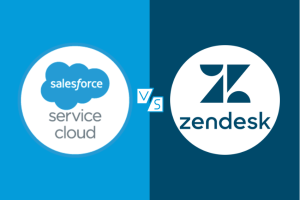Vapor is a popular web framework written in Swift that allows developers to build robust and scalable web applications. By leveraging the power of Amazon Web Services (AWS), developers can enhance their Vapor applications with various cloud-based services. This article explores the integration capabilities of Vapor with three key AWS services: DynamoDB for database storage, S3 for file storage, and CloudFront for content delivery. We will delve into the benefits and demonstrate how to utilize AWS Services with Vapor effectively. Also, You can get in touch with Laravel development services providers to implement things in the right way.

Integrating DynamoDB with Vapor:
Here, we will see the benefits of DynamoDB for Vapor.
-
Benefits of DynamoDB for Vapor
DynamoDB, a managed NoSQL database service by AWS, offers several advantages for Vapor applications. These include seamless scalability, high performance, automatic data replication, and built-in security. By integrating DynamoDB with Vapor, developers can focus on application logic while leveraging a highly available and fully managed database services.
-
Setting Up DynamoDB in Vapor
To integrate DynamoDB with Vapor, you need to install the DynamoDB package provided by the Vapor community. This package allows you to interact with DynamoDB using Vapor’s Fluent ORM. You’ll need to configure the connection settings, including the AWS region and credentials, in your Vapor application’s configure.swift file.
-
Performing CRUD Operations with DynamoDB
With DynamoDB integrated into Vapor, you can utilize Vapor’s Fluent ORM to perform Create, Read, Update, and Delete (CRUD) operations on your DynamoDB tables. Vapor’s Fluent provides a convenient and expressive API for interacting with the database. You can define models, create, retrieve, update, and delete records, and perform complex queries using Vapor’s query builder.
Utilizing S3 for File Storage
Let’s see the how we can use S3 for the purpose of file storage, their advantages and configuration process.
-
Advantages of S3 for Vapor Applications
Amazon S3 is a highly scalable and durable object storage service. Integrating S3 with Vapor offers multiple benefits, such as secure and reliable file storage, easy accessibility, and the ability to handle large files or media assets. S3 provides a cost-effective solution for managing file uploads, user-generated content, and static assets in Vapor applications.
-
Configuring S3 in Vapor
To utilize S3 for file storage in Vapor, you need to install the S3 package provided by the Vapor community. This package enables you to interact with S3 through Vapor’s APIs. You’ll need to configure your S3 bucket’s access credentials and region in the configure.swift file. Additionally, you can specify options like encryption, storage class, and permissions for uploaded files.
-
Uploading and Retrieving Files from S3
With S3 integrated into Vapor, you can easily upload and retrieve files using Vapor’s File type and the S3 APIs. To upload a file, you can use Vapor’s Request object to obtain the file data, and then save it to S3 using the configured S3 client.
Enhancing Content Delivery with CloudFront
Here, we will see the benefits and setup of CloudFront for Vapor.
-
Benefits of CloudFront for Vapor Applications
Amazon CloudFront is a content delivery network (CDN) service that helps improve the performance, scalability, and security of your Vapor applications. By integrating CloudFront, you can deliver static and dynamic content to users worldwide with low latency. CloudFront caches your content at edge locations, reducing the load on your Vapor servers and providing a faster experience for end-users.
-
Setting Up CloudFront with Vapor
To leverage CloudFront in your Vapor application, you need to configure CloudFront as a CDN for your desired content. Start by creating a CloudFront distribution and pointing it to your Vapor application’s origin server. Next, configure your Vapor application to use the CloudFront domain name as the CDN endpoint for static assets, such as CSS, JavaScript, and images.
-
Accelerating Content Delivery with CloudFront
Once CloudFront is set up, it will act as a caching layer between your Vapor application and end-users. CloudFront automatically caches content at its edge locations and serves it directly to users from the nearest edge location, reducing the round-trip time. Additionally, CloudFront supports features like content compression, SSL/TLS termination, and DDoS protection, enhancing the performance, and security of your Vapor application.
Conclusion
Integrating AWS services with Vapor brings a myriad of benefits to web developers. DynamoDB offers a scalable and managed NoSQL database solution, while S3 provides reliable and cost-effective file storage capabilities. CloudFront, as a CDN, enhances content delivery and improves the performance of Vapor applications worldwide. By leveraging these services, developers can focus on building robust and scalable web applications while benefiting from the powerful infrastructure and features offered by AWS.
In this article, we discussed the integration capabilities of Vapor with DynamoDB, S3, and CloudFront. We explored the benefits of each service, how to set them up in a Vapor application, and demonstrated their utilization through code examples. Hire Laravel developer to harness the power of AWS services and take your vapor application to the next level, delivering exceptional performance, scalability, and user experience.
Remember, integrating AWS services with Vapor is just the beginning. AWS offers a wide range of services that can further enhance your application, including authentication, messaging, analytics, and more. As you continue your development journey, exploring and utilizing these services will allow you to build even more powerful and feature-rich Vapor applications.


